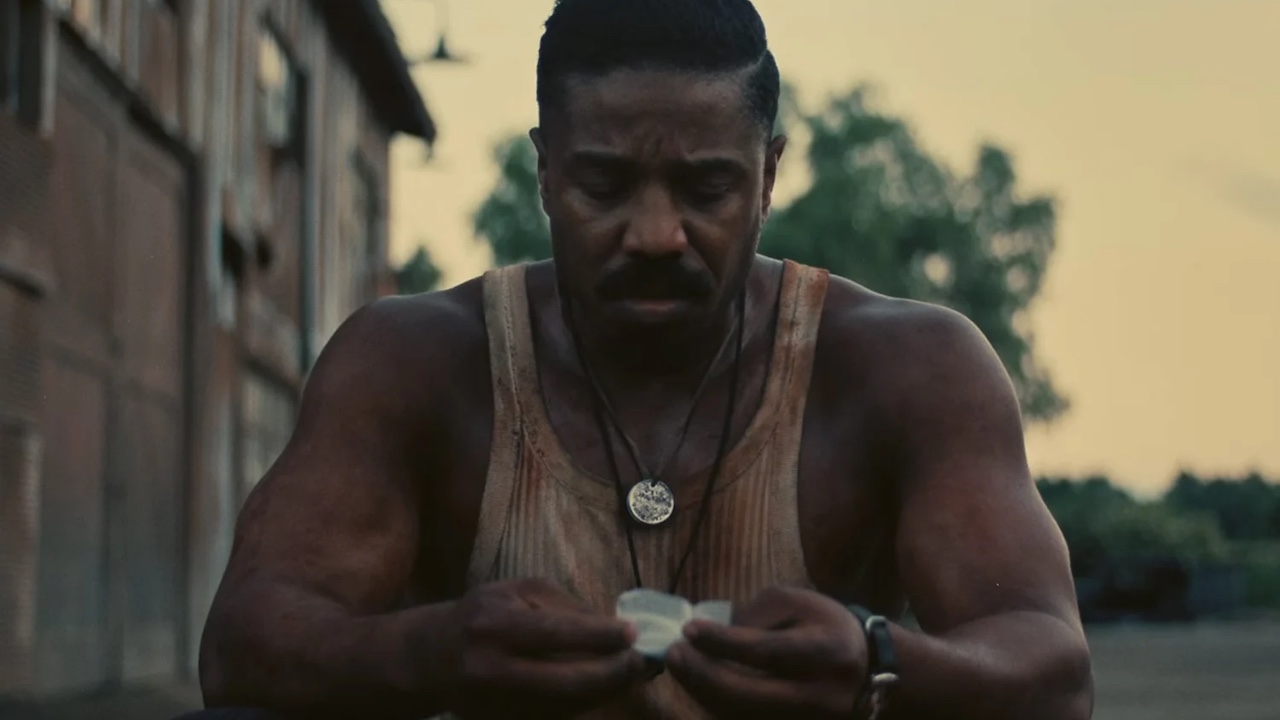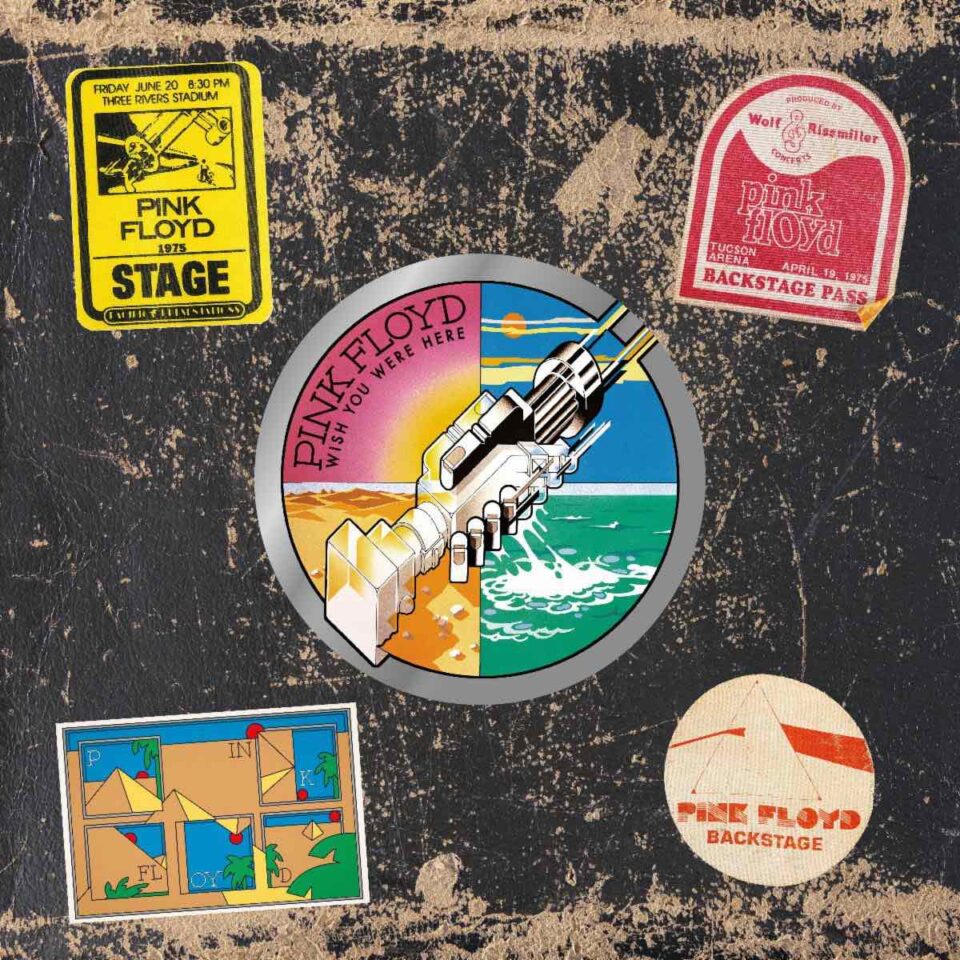Though not unfounded, the trope of art as transcendence is well-worn. Filmmakers have long relied on the refrain to comment on music, in particular—its penetrating power, its elusive magic, the identities we find in it—to varying degrees of cheesiness. In the more-than-capable hands of writer-director-producer Ryan Coogler, though, and amid the dulled sensory experiences of modern culture, Sinners immerses viewers in the felt, the sensual capacity of music-as-ceremony and a simultaneous method of survival. The film stands head and shoulders above many like it in a lake of tantalizing fire.
Sinners is a Southern Gothic period horror vampire film steeped in the spirit of Delta blues. “Genre is an invention of racism,” said Coogler in a recent interview with lovable curmudgeon and bad interviewer Marc Maron. Accordingly and in agreement, I’ll steer clear of pigeonholing to simply say that Sinners is an amalgamation composed of thrillers, horror, westerns, and the supernatural. It’s a genuinely thoughtful, fun, and visually striking film that does some important myth-making work. Notably, the thirsty, fanged undead folks are perfectly seductive and terrifying. They’ve got the glowing eyes, claws, and carnal instincts, but not the weird faces, of the uggos you’d find in Buffy or the structurally similar From Dusk Till Dawn.
Most audiences would’ve been content with blood sucking, fight scenes, jump scares, and the duplicate presence of Michael B. Jordan, but Coogler doesn’t stop there. He delivers a work that artfully weaves seemingly disparate and monolithic subjects surrounding race, class, and culture to wrestle with a variety of figurative and literal monsters: vampires, the KKK, faith, curses, and the leveraging power of money. New England has Ichabod Crane, and the Midwest has lake monsters. The American South, on the other hand, is haunted by its past and those who refuse to reckon with it, i.e., our country’s inability to grapple with the horrors of slavery and the evil its proponents heaped on people of color, particularly. Strength of community, the idealism of freedom, and the importance of proper technique when performing cunnilingus are also thematic constants.
In Sinners, Smoke and Stack are twin brothers, both played exquisitely by Jordan, traversing the familiar gangster-to-heart-of-gold pipeline. The men have gone from the Delta to Chicago and back again, returning to their hometown of Clarksdale, Mississippi, in 1932. In the height of the Jim Crow South, the twins open a juke (jook) joint in an old sawmill to make some legitimate money, rather than the unsavory mob-related methods they’d been engaged in back in Illinois. The narrative centers on the chaos and excitement of the opening night of Club Juke, where patrons must contend with vampires, racists, and romantic partners.
The brothers’ young adult cousin, Sammie (also known as Preacher Boy), is a wide-eyed, guitar-toting aspiring blues musician played by R&B singer Miles Caton in his film debut, who learned to play the guitar for the film. You’d never know it, because he’s an absolute natural (stay until the very end for a post-credits treat). Tangentially, a few actors peripherally fake playing the violin terribly, which is a minor point, as it’s my pet peeve as a former subpar violinist. A blood-soaked Sammie opens the film, clutching what’s left of his guitar as his stern, Christian pastor father, played by rapper-poet Saul Williams, delivers a sermon. A few other standout performances include Delroy Lindo as Delta Slim, Wunmi Mosaku as the spiritual leader and Smoke’s lover Annie, and the Oscar-nominated Hailee Steinfeld, who initially burst onto the scene with True Grit.
You likely know Coogler from hits like Black Panther and Creed; as flawless a filmography as any director could wish for. Sinners is feature film number five for Coogler and the fourth time he’s worked with his muse, Jordan (Jordan only cameoed in the 2022 Black Panther sequel, Wakanda Forever). He’s a methodical and intentional filmmaker who cares as deeply about the art form as he does about style and content. Coolger’s career began with the profoundly heartwrenching Fruitvale Station in 2013, a film about the devastating final day of Oscar Grant III, a young Black man who was murdered by Bay Area Rapid Transit police officers in Oakland in 2009. The filmmaker has since maintained an impressive upward trajectory, though he remains focused on showcasing Black stories with nuance and reverence, evident in everything he touches—including the must-watch film for which he served as a producer, 2021’s Judas and the Black Messiah.
Director of Photography Autumn Durald Arkapaw (who’d previously collaborated with Coogler on Wakanda Forever) shot the film in IMAX (the first female DP to do so, astoundingly) and Ultra Panavision 70. Previous proponents of the costly and cumbersome IMAX medium include male directors such as Christopher Nolan, Denis Villeneuve, J.J. Abrams, Michael Bay, and James Gunn. A significant portion of 2022’s genre-bending alien film Nope was also partially shot in IMAX format. A trait films like these—in addition to Tenet, Oppenheimer, and Interstellar—share is a commitment to spectacle. The large-format, founded in 1967, was initially used in documentaries and broke ground for its scope. In the context of Sinners, IMAX affords Durald and Coogler the opportunity to dabble in myth-making outside of the comic book universes.
New England has Ichabod Crane, and the Midwest has lake monsters. The American South, on the other hand, is haunted by its past and those who refuse to reckon with it.
The combination of extra height and higher resolution creates an immersive experience for audiences wherein the grandiose scale of the horizon against the flat landscapes of the Deep South, for example, is awe-inducing (think There Will Be Blood). Distinctly, though, Sinners uses IMAX to lend a grandeur to not only the epic blood-sucking showdowns, but also the quieter, character-driven moments. Not commonly used for scenes with dialogue, Durald and Coogler capture an aura of legend in both climactic and intimate moments using IMAX. It’s a clever and subtle method of emotional storytelling that an average spectator may not be able to pinpoint, but is undeniably felt. Seen in an IMAX theater as intended, moviegoers can almost feel the stagnant air, which hangs heavy with humidity and leaves a sheen on all the body parts laid bare before it. It’s worth noting that Peele and Coogler are among the first Black filmmakers to film using IMAX cameras.
If music is a character in Sinners, Club Juke is its heart. Juke joints were liminal spaces of reprieve for the sharecroppers in the South, who were confined to a cycle of debt, limited autonomy, and social and political disenfranchisement following World War I. Coolger skillfully unfurls this world for newcomers to these places of ritual. “Musically speaking, the Jook is the most important place in America,” wrote Zora Neale Hurston in 1934. “The songs grow by incremental repetition as they travel from mouth to mouth and from Jook to Jook for years before they reach outside ears.” The repetition of a song (think chorus or call-and-response) is akin to a chant, a summoning in this context. Stomping on the floorboards of a dusty barn, feeling the heat in your chest, it can take you elsewhere.
Sinners was orchestrated by Ludwig Göransson, a longtime collaborator of Coogler’s since their days at the University of Southern California, and an accomplished professional in his own right—a testament to the power of early artistic partnerships. Through his music, the film explores and examines the implications of “soul,” a sentiment echoed in the blues itself, a genre born from substantial hardship. Interestingly, it’s an idea shared by the principal vampire, Remmick (Jack O'Connell), whose Irish roots and affinity for music also reflect this concept of generational trauma.
Coogler masterfully relates this profound connection, playing with the mythos of selling one's soul for its power—a paradigm complicated for Black artists in a nation that readily consumes their creations while denying their humanity, a truth spoken plainly in the film with the line, “White people like blues just fine, they just don’t like the people who make it.” Sinners understands that to truly have a soul, as both a musician and a nation, requires acknowledging the mud from which it came.







